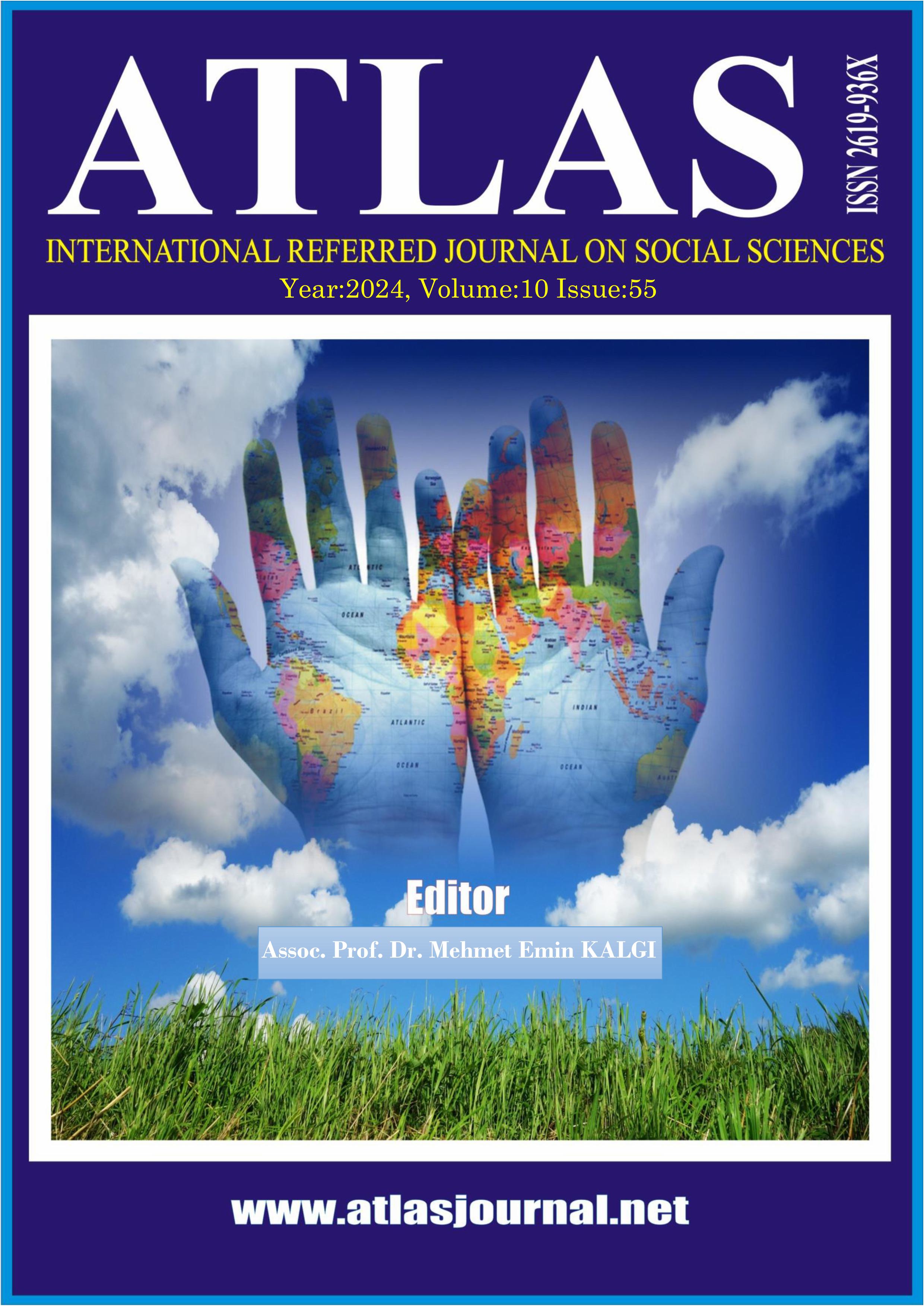Tarih ve Teknoloji Kesişiminde Tarım: Antik Çağdan Yapay Zekâ Destekli Geleceğe
DOI:
https://doi.org/10.5281/zenodo.14510224Anahtar Kelimeler:
Tarım 4.0, Tarımsal Mekanizasyon, Dijital Tarım, Neolitik Devrim, Tarımsal İnovasyonÖzet
Tarım, insanlığın varoluşundan itibaren hayatta kalma mücadelesinin temelini oluşturmuş ve ekonomik kalkınma, istihdam yaratma ve sürdürülebilir bir dünya için vazgeçilmez bir araç haline gelmiştir. Tarımın tarihsel gelişimi, mekanizasyonun üç ana evresini kapsamaktadır: ilkel el aletlerinin kullanımı, hayvan gücünün entegrasyonu ve endüstri devrimiyle mekanik teknolojilerin benimsenmesi. Bu süreç, insanlığın sosyal ve ekonomik yapılarının dönüşümünü şekillendirmiştir. İkinci tarım devriminde saban gibi araçların icadı, üretkenliği artırmış; buhar gücünün kullanımı ve içten yanmalı motorların yaygınlaşması ise tarımsal üretimde köklü değişimlere neden olmuştur. Günümüzde, Tarım 4.0 olarak adlandırılan dijital dönüşüm, tarımsal üretimi optimize etmekte ve çevresel sürdürülebilirlik için yenilikçi çözümler sunmaktadır. IoT, yapay zekâ ve büyük veri analitiği gibi teknolojiler, tarım süreçlerinde su ve enerji tasarrufu sağlarken, gıda güvenliği ve izlenebilirliği artırmaktadır. Ayrıca, bu yenilikler, yoksulluğun azaltılması ve iklim değişikliğine uyum sağlanması gibi küresel hedeflere katkıda bulunmaktadır. Bu çalışma, tarımın tarihsel süreçten modern inovasyonlara kadar geniş bir yelpazede geçirdiği dönüşümleri ele alarak, sürdürülebilir tarım uygulamaları için bilimsel ve pratik öneriler sunmaktadır.
Referanslar
Basso, B., & Antle, J. (2020). Digital agriculture to design sustainable agricultural systems. Nature Sustainability, 3(4), 254–256. https://doi.org/10.1038/s41893-020-0510-0
Diamond, J. (1997). Guns, germs, and steel: The fates of human societies. W.W. Norton & Company.
FAO. (2017). The future of food and agriculture: Trends and challenges. Food and Agriculture Organization of the United Nations.
Finger, R., Swinton, S. M., El Benni, N., & Walter, A. (2019). Precision farming at the nexus of agricultural production and the environment. Annual Review of Resource Economics, 11(1), 313–335. https://doi.org/10.1146/annurev-resource-100518-093929
Godfray, H. C. J., & Garnett, T. (2014). Food security and sustainable intensification. Philosophical Transactions of the Royal Society B: Biological Sciences, 369(1639), 20120273. https://doi.org/10.1098/rstb.2012.0273
Kılıç, S. (2013). İnovasyon anlayışına dayalı ürün geliştirme performansının değerlendirilmesi [Doctoral dissertation, Uludağ Üniversitesi Sosyal Bilimler Enstitüsü].
Klerkx, L., Aarts, N., & Leeuwis, C. (2010). Adaptive management in agricultural innovation systems: The interactions between innovation networks and their environment. Agricultural Systems, 103(6), 390–400. https://doi.org/10.1016/j.agsy.2010.04.005
Klerkx, L., & Leeuwis, C. (2009). Establishment and embedding of innovation brokers at different innovation system levels: Insights from the Dutch agricultural sector. Technological Forecasting and Social Change, 76(6), 849–860. https://doi.org/10.1016/j.techfore.2008.10.001
Li, S., & Wang, C. (2019). Adoption of sustainable agricultural practices: Role of social capital and innovation characteristics. Sustainability, 11(6), 1722. https://doi.org/10.3390/su11061722
Liakos, K. G., Busato, P., Moshou, D., Pearson, S., & Bochtis, D. (2018). Machine learning in agriculture: A review. Sensors, 18(8), 2674. https://doi.org/10.3390/s18082674
Lobell, D. B., Schlenker, W., & Costa-Roberts, J. (2011). Climate trends and global crop production since 1980. Science, 333(6042), 616–620. https://doi.org/10.1126/science.1204531
Mazoyer, M., & Roudart, L. (2006). A history of world agriculture: From the Neolithic age to the current crisis. Monthly Review Press.
Pretty, J. (2008). Agricultural sustainability: Concepts, principles, and evidence. Philosophical Transactions of the Royal Society B, 363(1491), 447–465. https://doi.org/10.1098/rstb.2007.2163
Rose, D. C., Chilvers, J., & Sutherland, W. J. (2021). Decision support tools for agriculture: Towards effective design and delivery. Agricultural Systems, 187, 103027. https://doi.org/10.1016/j.agsy.2020.103027
Rogers, E. M. (2003). Diffusion of innovations (5th ed.). Free Press.
Sabancı, A., & Özgüven, F. (1990). Tarımsal mekanizasyon işletmeciliği. ÇÜ Ziraat Fakültesi Ders Kitabı. https://tarimmakinalari.cu.edu.tr
Schumpeter, J. A. (1934). The theory of economic development: An inquiry into profits, capital, credit, interest, and the business cycle. Harvard University Press.
Tektaş, A., & Tosun, E. Ö. (2016). Yiyecek ve içecek endüstrisinde uluslararası performans kıyaslaması [International performance benchmarking in the food and beverage industry].
Tübitak Bilim Genç. (2021). 5000 yıllık kafatasında veba izleri. https://bilimgenc.tubitak.gov.tr/makale/5000-yillik-kafatasinda-veba-izleri
Tzounis, A., Katsoulas, N., Bartzanas, T., & Kittas, C. (2017). Internet of Things in agriculture, recent advances, and future challenges. Biosystems Engineering, 164, 31–48. https://doi.org/10.1016/j.biosystemseng.2017.09.007
Wolfert, S., Ge, L., Verdouw, C., & Bogaardt, M.-J. (2017). Big data in smart farming: A review. Agricultural Systems, 153, 69–80. https://doi.org/10.1016/j.agsy.2017.01.023
Yurtoğlu, N. (2017). Cumhuriyet dönemi ziratte makineleşme sürecinde Türkiye Zirai Donatım Kurumu (TZDK) yeri ve önemi (1943-1960). Tarih Okulu Dergisi, 10(29), 277–312.
İndir
Yayınlanmış
Nasıl Atıf Yapılır
Sayı
Bölüm
Lisans
Telif Hakkı (c) 2024 Atlas Journal

Bu çalışma Creative Commons Attribution-NonCommercial 4.0 International License ile lisanslanmıştır.


